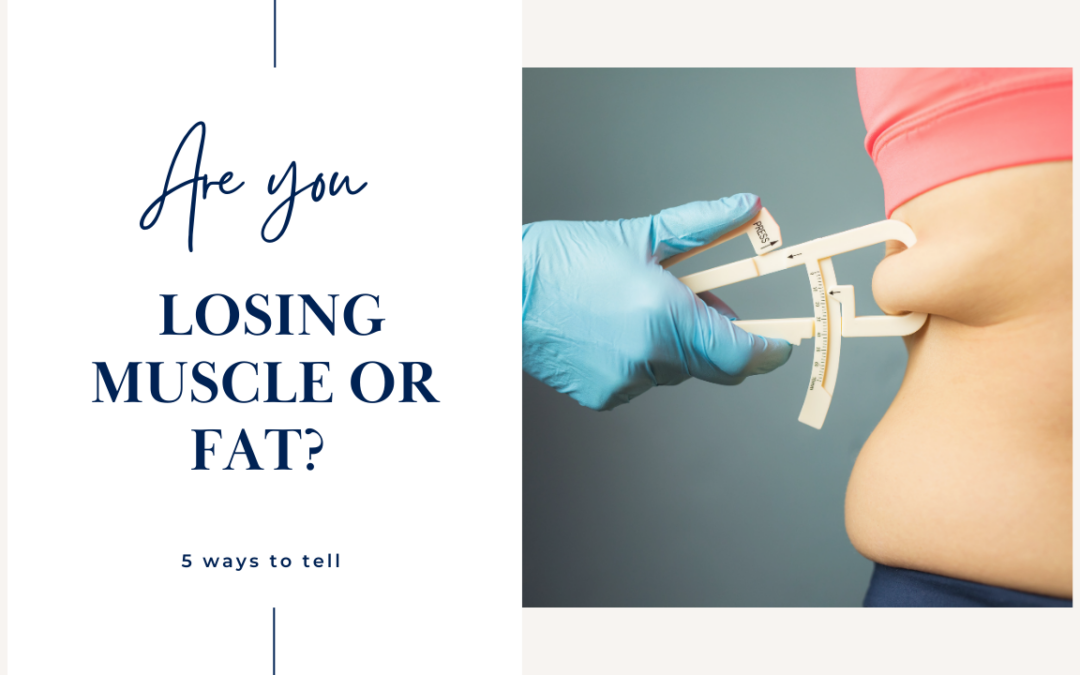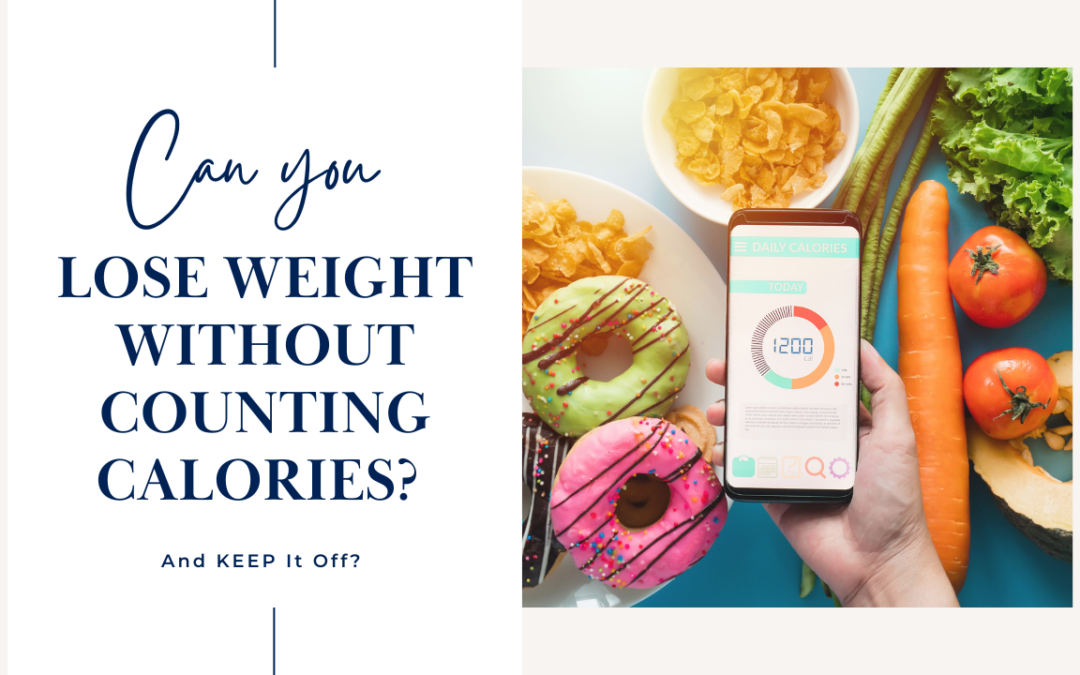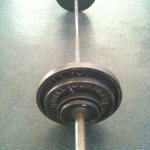
by EM2WL | May 26, 2023 | Cardio
HOW MUCH CARDIO IS TOO MUCH?
Contrary to my personal anti-treadmill stance, cardio can absolutely play a role in fat loss. But just like everything else in life, there is such a thing as too much of a good thing.
Although our motto here at EM2WL is “cardio for fun, weights to transform,” we DO recognize the value that cardio can add to a goal-specific workout plan (and that fact that some of you REALLY actually…umm…love it). So it’s understandable that cardio lovers in the Fam, striving to heal their metabolisms and finally lose fat tend to panic a bit when they hear anything about doing “too much” cardio!
When it comes to cardio, it seems that people either love it or hate it. Whether you’re a group instructor, runner, or despise cardio, your workouts should work for you, not against you. In order for this to happen, you must understand the purpose behind each type of workout, how it pertains to your goals, and apply it accordingly.
THE PURPOSE OF CARDIO
Cardio is endurance exercise. The more you do, the better your body adapts, and builds up the ability to be able to withstand the same circumstances next time.
This adaptation is great if the goal is to cover a certain distance in increasingly quicker amounts of time (think: training for a marathon), or simply last longer in Zumba class.
As far as general heart-health is concerned, this is usually the goal.
UNDERSTANDING ADAPTATION
Your new level of efficiency is usually noticeable during workouts when you’re suddenly able to do more cardio than you initially were physically capable of doing just weeks/months before. For example: you may have originally broken a sweat doing ten minutes of cardio before, but now you have to do fifteen minutes to get to the same level.
If you were formally breathless chasing the kids, or climbing a flight of stairs – this type of adaptation is an amazing/healthy feeling. However, when the goal is fat loss, this adaptation means you now have to do more work to achieve the same results you initially were achieving with your cardio-only workouts.
Adaptation = doing the same work for lesser results.
When it comes to adaptation, strength training is no exception. If you lift the same weight day in and out, your body eventually adapts and that weight just won’t cut it. You’ll have to introduce new stimuli to keep getting results, or risk hitting the infamous plateau.
But there’s good news when it comes to weight lifting adaptation: all you have to do to bust past that plateau is to lift heavier weights! The duration of your weight lifting sessions will never have to change (like your cardio has to) so long as you’re increasing your weights. This allows you to still be efficient without putting in extra time. Weight lifting gives you the most bang for your buck.
In other words: endurance exercise improves your endurance, but doesn’t necessarily contribute to fat loss beyond the initial newbie phase.
Lifting improves your strength, endurance, lean body mass (muscle!) and assists in fat loss.
MONITORING ADAPTATION
So how do you know that you’ve entered the “adaptation zone?”
In addition to monitoring your performance during the workout, you can turn to your heart rate monitor (HRM) for clues. Using a HRM – or other wearable fitness device that monitors HR (like Fitbit) will allow you to see when your body gets to a point where it becomes more efficient at cardio.
As endurance improves, your HRM will subsequently show that your calorie burn is lessening for common cardio activities. When you notice that you’re burning less cals boing the same amount of work, your body has adapted. At that point you must either increase time, or change up your workout style to continue getting results.
If, for instance, you’re training for a race or are focused on increasing endurance, remember increased efficiency is in fact a good thing. When that calorie adaptation occurs, you’ve just shortened your race time. Increasing the time of the workout is actually the goal in that case.
On the flip side, when it comes to fat loss, inefficiency is key.
WHAT IS “TOO MUCH” FOR YOU?
Doing the same workouts, but burning less cals, would mean that over time you’d be eating too much (even on a diet) – and eventually start GAINING weight.
That is what we’re trying to prevent when we provide warnings about “too much cardio” during your reset or early stages of fat loss. It’s not about removing something that you love, but rather understanding the roles that workout style plays in your fat loss journey.
There is no magic, universal number for how much cardio is too much. By using the tips above, your best answer is to listen to your body and evaluate often to see where your efficiency levels are at and if they’re conducive to the physique goals you’re trying to achieve.

by EM2WL | May 17, 2023 | Building Muscle, Fat Loss / Cutting
Can muscle turn into fat (or vice versa)? Technically…no. But it can sometimes look like it. This illusion is precisely why most women spend less than 5% of their weight loss efforts trying to build muscle, and over 95% (spinning their wheels!) trying to tone it. Today, we’re setting the record straight about why this simply isn’t possible and how having outdated beliefs about muscle and fat being interchangeable ends up causing more problems for 40+ women than it provides solutions… (full video below)
Understanding Body Composition
Before we dive into the myth, let’s take a moment to understand the characteristics of muscle and fat. Muscle tissue is composed of protein filaments and is responsible for movement, strength, and endurance. On the other hand, fat tissue serves as an energy storage depot, storing excess calories in the form of triglycerides.
The Distinct Nature of Each
Each cell is distinct in their composition and function. Muscle cells contract to produce force, allowing movement, while fat cells store energy as triglycerides. These two tissues have different structures, purposes, and metabolic activities, making it impossible for muscle to transform into fat or vice versa.
Weight Loss and Changes in Body Composition
During weight loss, it’s common to experience changes in muscle mass and fat stores. However, it’s crucial to understand that these processes are separate and not interconvertible. A calorie deficit can lead to overall weight loss, but if not managed properly, it can result in loss of muscle and potential gain in bodyfat. Proper nutrition, exercise, and a balanced approach to weight loss are key to preserving lean body mass while reducing fat.
Factors Influencing Muscle Loss and Bodyfat Gain
Several factors can contribute to muscle loss and fat gain. Inadequate protein intake, lack of strength training exercises, and prolonged calorie deficits can lead to muscle breakdown. On the other hand, excess calorie intake, reduced physical activity, and an imbalanced diet can contribute to fat gain. By addressing these factors, we can maintain muscle mass and promote a healthier body composition.
Preserving Muscle and Reducing Bodyfat
To preserve lean body mass and reduce bodyfat effectively, it’s important to adopt specific strategies. Engaging in regular strength training exercises helps to maintain and build muscle mass. Consuming an adequate amount of protein is crucial for muscle growth and repair. It’s also essential to create a moderate calorie deficit that supports fat loss while minimizing muscle loss. Finding a sustainable approach to nutrition and exercise is key to achieving long-term success.
Conclusion: Muscle cannot turn into fat, and fat cannot turn into muscle. They are distinct tissues with different structures and functions. By debunking this myth, we aim to empower individuals to make informed decisions about their fat loss journey. Remember, preserving muscle mass, reducing bodyfat, and achieving a balanced body composition require a combination of proper nutrition, regular exercise, and a sustainable approach.

by EM2WL | Apr 14, 2023 | Fat Loss / Cutting, Troubleshooting
When it comes to weight loss, it’s important to remember that losing weight doesn’t always mean losing fat. In fact, if you’re not careful, you may end up losing muscle instead. Losing muscle mass can slow down your metabolism and make it more difficult to maintain your weight loss over time. In this post, we’ll explore five signs that you may be losing muscle instead of fat, and provide tips to help you preserve muscle mass and achieve your fitness goals.
#1 You’re Losing Weight Too Quickly
Losing weight too quickly can be a sign that you’re losing muscle mass. When you lose weight too quickly, your body may start breaking down muscle tissue for energy, which can slow down your metabolism and make it more difficult to maintain your weight loss over time. Aim to lose no more than one to two pounds per week to ensure that you’re losing fat, not muscle.
Key Takeaway: While losing weight quickly may seem like a good thing, it could be a sign that you’re losing muscle instead of fat. Slow and steady wins the race when it comes to weight loss!
#2 You’re Not Engaging in Strength Training
If you’re not engaging in strength training exercises, you may be losing muscle mass. Strength training exercises help to build and preserve muscle mass, so it’s important to incorporate them into your workout routine. Aim to strength train at least two to three times per week to help preserve muscle mass and maintain strength.
Key Takeaway: If you’re not strength training, you may be missing out on an important component of weight loss. Incorporating strength training exercises into your routine can help preserve muscle mass and maintain strength.
#3 Your Diet is Too Restrictive
If you’re following a very restrictive diet, you may be losing muscle mass. Restrictive diets can be low in calories and protein, which are both important for preserving muscle mass. It’s important to consume enough protein and calories to support muscle growth and repair.
Key Takeaway: While following a restrictive diet may seem like a good way to lose weight quickly, it could be causing you to lose muscle mass instead of fat. Don’t forget to consume enough protein and calories to support muscle growth and repair.
#4 You’re Feeling Weaker
If you’re feeling weaker than usual, it may be a sign that you’re losing muscle mass. Muscle mass is directly tied to strength, so if you’re losing muscle mass, you may also be losing strength. This is usually amplified with #2 and #3 are out of whack. Yet another reason why it’s so important to keep calories as high as possible and continue to strength train even when dieting.
Key Takeaway: Feeling weaker than usual could be a sign that you’re losing muscle mass. Don’t let your strength suffer – make sure you’re eating enough calories to sustain the level of activity that you are engaging in while incorporating a periodized strength training routine to help preserve muscle mass and maintain strength.
#5 Your Body Composition Isn’t Changing
Finally, if your body composition isn’t changing, it could be a sign that you’re losing muscle mass. While you may be losing weight overall, you may not be losing fat in the right places. Losing muscle mass can cause your body to lose shape and become less toned.
Key Takeaway: If you’re not seeing changes in your body composition, it could be a sign that you’re losing muscle mass. Don’t let your hard work go to waste – make sure you’re preserving muscle mass and losing fat in the right places.
If you’re trying to lose weight, it’s important to make sure you’re losing fat, not muscle. By paying attention to these five signs and incorporating strength training exercises into your routine, you can help preserve muscle mass and achieve your weight loss goals in a healthy and sustainable way.

by EM2WL | Mar 6, 2023 | Tracking Progress
Losing weight without tracking food is a recipe for failure.
Now…don’t get me wrong – losing weight without tracking is absolutely possible!
But the sad truth is that so many of us, myself included, spend most of our much more forgiving years (teens, 20s, 30s, etc) caught up in the fantasy of what’s possible short term – rather than the long term effect of that possibility.
We focus more on what we wish our bodies could look like, and how fast we can get there – rather than the honest reality of how we can achieve it, what it takes to sustain it, and the amount of hard work it takes to rewire the Diet Addict mindset.
[The Diet Addict tends to avoid, ignore, or dismiss essential pieces to the puzzle like eating enough, building muscle, or …tracking food intake – simply because they “have been able to lose weight before” without doing it.]
But here’s something you should know: maintaining weight loss is MORE important than losing it, and more indicative of “success” in the eyes of science. And when it comes down to it, refusing to track food intake is one of the number one reasons someone fails when trying maintain a healthy lifestyle and lasting weight loss!
So…does this mean that you need to be chained to a food tracking app for the rest of your life? 🥺
Let’s discuss!
The Problem with Tracking Food
First things first… the elephant in the room.
There are SO many reasons why some women over 40 may not want to track food for weight loss. Here are a handful that have come up repeatedly over the years with my 1:1 clients, and the clients of the PTs I coach:
(Take note: they’re all completely VALID)
- They find it time-consuming and tedious to track everything they eat and drink.
- They may feel overwhelmed by the process of tracking food and find it difficult to incorporate into their daily routine.
- They may feel embarrassed or ashamed of their current eating habits and don’t want to face the reality of what they are consuming.
- They may believe that tracking food is restrictive and takes away the pleasure of eating.
- They may not have access to the technology or tools needed to track their food.
- They may believe that they already have a good understanding of what they should be eating and don’t feel that tracking their food will provide additional benefit.
- They may feel that tracking food is too scientific and prefer to rely on their intuition or common sense when it comes to eating.
- They may not have the discipline to consistently track their food and worry that they will fail if they start.
- They may feel that they have too many other responsibilities and priorities in their lives and don’t want to add another task to their to-do list.
- They may have had negative experiences with tracking food in the past, such as feeling guilty or obsessing over calorie counts.
So with all of these completely valid reasons NOT to log, why even bother placing any emphasis on it?
Well, put frankly… it (always) comes down to YOUR goals. What exactly are you trying to accomplish?
Navigating Successful Fat Loss after 40
Dieting (for many 20-30 somethings) is a lot like hopping in your car to take a road trip with no directions – and no responsibilities. You just let the road take you wherever it goes, because you have nowhere to be, and no one to answer to. As you drive around aimlessly, you may find some extremely cool destinations without even trying. You may also come across some not-so-cool, or even dangerous destinations – but even those may provide a secret thrill…or at very least, a cool story to tell. ☠️
Aimlessness and intuition is fine if you have no goal or specific place you’re trying to get to. There is absolutely a time and place for being carefree, letting your hair down, and exploring your surroundings.
But when you want to get somewhere specific, you need specific instructions and you need accountability for whether you’re following them. Knowing where you are on the map helps prevent you from blaming the route when you haven’t actually started the car. Even if the direction is “wrong” or you decide to go somewhere else – if you have a map, you can backtrack to where you took the wrong turn, instead of continuing on until you’re 100s of miles off-track.
It’s true that some people don’t require tracking after a certain point. Going to places that you’ve gone to HUNDREDS of times before, typically don’t require GPS (unless someone else was driving and you weren’t paying attention!)
But when you’re doing it for the first time – you do (intuitive doesn’t work unless you’ve done the “structure” first to know when to keep going/when to stop, what works and why not).
This can be both a pro and con when it comes to tracking your food and knowing how to eat for fat loss. If you’ve been “winging it,” blind-logging, or following for fad diets for years, that’s what you’ll do intuitively.
Going to the wrong destination. Over. and. over. and. over.
On the other hand… If you’ve been using logging as a tool to hold yourself accountable, build essential habits, and carefully studying what works and why…you’ll be more equipped to intuitively keep the weight off – without logging.
How refusing to track impedes progress
When people refuse to track food for weight loss, they may face several problems that can impede their progress and make it difficult to achieve their goals.
Some potential problems include:
-
- Lack of awareness: Without tracking food, it can be difficult to accurately assess how much and what type of food you are consuming, which can make it harder to identify areas for improvement.
-
- Inability to identify trigger foods or patterns: Without tracking food, it can be difficult to identify specific foods or situations that trigger overeating or unhealthy food choices.
-
- Lack of accountability: Without tracking food, it can be hard to hold yourself accountable for your eating habits, which can make it easier to slip back into old habits or make poor food choices.
-
- Plateauing: Without tracking food, it can be difficult to assess whether you are making progress towards your weight loss goals, which can lead to frustration and plateaus in weight loss.
-
- Inability to make adjustments: Without tracking food, it can be challenging to make adjustments to your eating habits or dietary intake, which can prevent you from achieving optimal results.
-
- Difficulty maintaining consistency: Without tracking food, it can be difficult to maintain consistency in your eating habits, which can make it harder to achieve long-term weight loss success.
Overall, refusing to track food for weight loss can make it more challenging to achieve weight loss goals and maintain them long term.
Only YOU Can Decide
As unnatural and tedious as it may feel, tracking food intake at *some point* in the journey is the key to LONG TERM successful weight loss – it gives you the data needed to set realistic goals, identify trigger foods or patterns, hold yourself accountable for your actions and make necessary adjustments along the way.
With the knowledge you gain during periods of tracking, you’ll finally be able to break through plateaus, achieve lasting success that you can ultimately maintain INTUITIVELY!
So if you’ve been avoiding FULL accountability around logging your food it’s time to decide…
Do you want to keep working really hard (intuitively) and possibly have nothing to show for it? Or would you rather focus on embracing the temporary discomfort/annoyance of tracking your eats, while learning from the data that it’s providing – so you not only lose fat, but also (intuitively and permanently!) keep it off?
If so, here a couple of suggested tools to help you put this into action:
Level 1 – Download the Quick Start Guide (Free), get a free MFP/Lose it account (or log in if you already have one), or pen/paper, etc… and start tracking again!*
Level 2 – Already tracking? Grab the EM2WL Starter Kit Bundle – and develop a more strategic game plan for incorporating the eating phases that most women over 40 have been avoiding for decades.
Level 3 – Join the Workout Vault – track your workouts (not just your food!), match the eating phases to the workouts, and take your results to the next level.
*Our site calculator gives starting points for where your calories should be for maintenance, fat loss, or muscle gain – but I always suggest logging AS IS first to see where you already are in comparison to those numbers.

by EM2WL | Jan 26, 2023 | Fitness Cycles (Periodization), Strength Training
If you’re a woman over 40, you may be wondering if bodyweight workouts can really help you build muscle and lose fat. After all, getting to the gym isn’t always easy with your busy schedule. But do bodyweight exercises really work? Is it possible to lose weight or build muscle using only your own body weight? Here, we dig into the truth about bodyweight workouts.
The Role of Calories
Calorie intake plays a huge role in both losing weight and gaining muscle. To lose fat, you need to create a calorie deficit by eating fewer calories than what your body needs to maintain its current weight. To gain muscle, on the other hand, you need to consume more calories than your body needs so it can use those extra calories to build muscle mass. Once your calorie intake is in check, then you can focus on your workouts.
Building a Strategy
When it comes to bodyweight workouts for women over 40, having a strategy is key if you want the exercises to “work” for you. Just like any workout plan that uses dumbbells or barbells, bodyweight plans should also be periodized—meaning they should have specific goals and progressions that help you reach those goals. For example, if one of your goals is gaining strength, then make sure that each session is focused on building strength rather than endurance or power (which are other types of periodization). This will ensure that the exercises are actually helping you reach your goals instead of simply wasting time with random exercises.
Rep Ranges Matter Too!
You also need to make sure that the rep ranges used in each session match the type of goal being worked on—for example, if your goal is hypertrophy (gaining muscle size), then don’t use endurance rep ranges (12+ reps). Instead, stick with 8-12 reps for hypertrophy-focused training sessions and 3-5 reps for strength-focused sessions.
Exercises can (and should!) also be manipulated depending on where you are in your periodization—you can either make them easier (more reps) or harder (less reps) by changing variables such as tempo or range of motion in order to produce muscle fatigue appropriate to your intended rep range better.
For example, elevating your feet on an incline pushup makes the exercise more difficult than doing traditional pushups on the ground would be; conversely, lowering yourself onto a low box makes pushups easier because it takes some of the tension off of your muscles during the movement.
Knowing how and when to manipulate exercises can keep your workouts challenging and effective — no matter what equipment (or lack thereof) is used!
In conclusion, yes – bodyweight workouts can be effective at helping women over 40 build muscle and lose fat! While managing calorie intake is important no matter what kind of exercise program you choose, having a well-thought-out strategy and understanding how rep ranges work will help ensure that the exercises chosen match up with whatever goal(s) being worked on — whether it’s gaining strength, building muscle, or increasing endurance!
With these tips in mind – get out there and start crushing those bodyweight workouts!
Plugin by Social Author Bio







Recent Comments